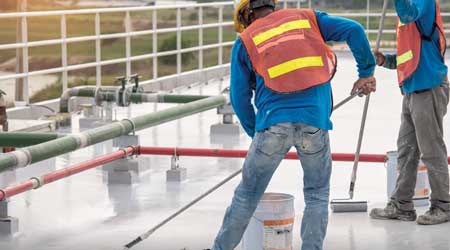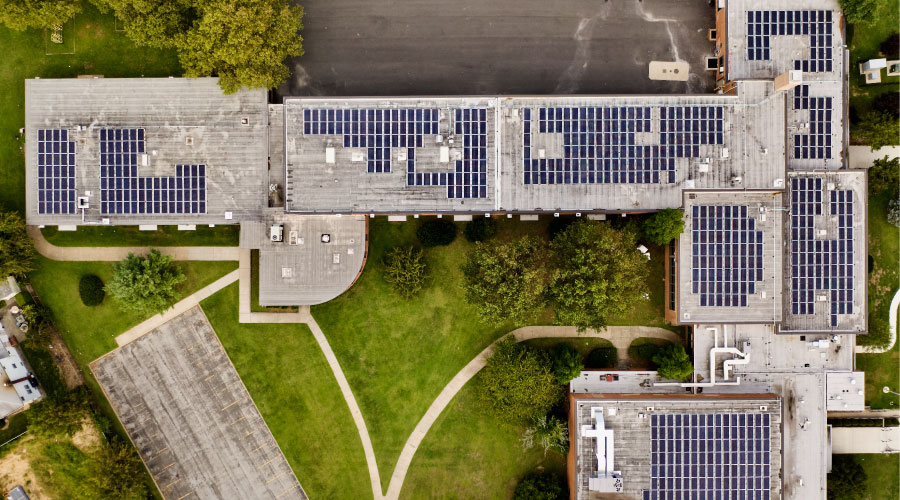 To ensure successful roof coating applications, managers need to be certain the coating is compatible with the roof surface to be coated.
To ensure successful roof coating applications, managers need to be certain the coating is compatible with the roof surface to be coated.Understanding Maintenance Requirements for Roof Coatings Systems
Twice-a-year inspections are the minimum, but managers should also inspect and perform maintenance on roofs after heavy weather events.
The frequency of roof-coating maintenance varies according to a roof’s age, stability, location and condition. If there are no overhanging or nearby trees or other sources of debris, a newly coated roof might require only one inspection, repair and cleaning each year.
As a roof ages or if problems arise such as ponding, unsealed seams or flashings, and leaking scuppers – during or after installation, managers need to schedule thorough inspection and repair at least twice a year.
If a facility goes through storms with heavy winds, rain, sleet, snow or ice, technicians should check the roof right after these events. A strong wind across the roof can lift the membrane up and cause fluttering, which puts stress on seams and joints at flashings and penetrations. Wind-blown debris and toppled A/C units also can puncture the membrane. The sooner technicians can repair the damage, the smaller the repair needed.
For longer coating life, technicians should complete all repairs before applying a coating. The main points to inspect carefully are seams, roof penetrations, drains, scuppers and flashing. They can run a pick manually along seams to detect small separations before they even become visible to the eye. They should include this practice each time they inspect the roof.
When it comes to rooftop equipment such as air handlers that need periodic maintenance, managers need to be aware that traffic and installing equipment on the deck can result in punctures. Installers should anchor this equipment to prevent toppling in storms. Sealed right away so they do not cause damage to the insulation, deck or occupant areas, punctures need not shorten a roof’s performance life.
To repair a puncture in a TPO roof, for example, technicians need to clean and scrub the surface around the puncture and rinse and dry it with a clean rag. If the surface is not oxidized from aging, the next step is to heat weld the patch over the puncture. Using a pick, probe the edges to ensure a good seal and caulk around the edges.
A combination of coating specification that is compatible with the roof membrane, a successful application, and an effective maintenance program can ensure managers deliver a project that provides a long-term, low cost performance life.
Thomas A. Westerkamp is a maintenance and engineering management consultant and president of the work management division of Westerkamp Group LLC.
Related Topics:















